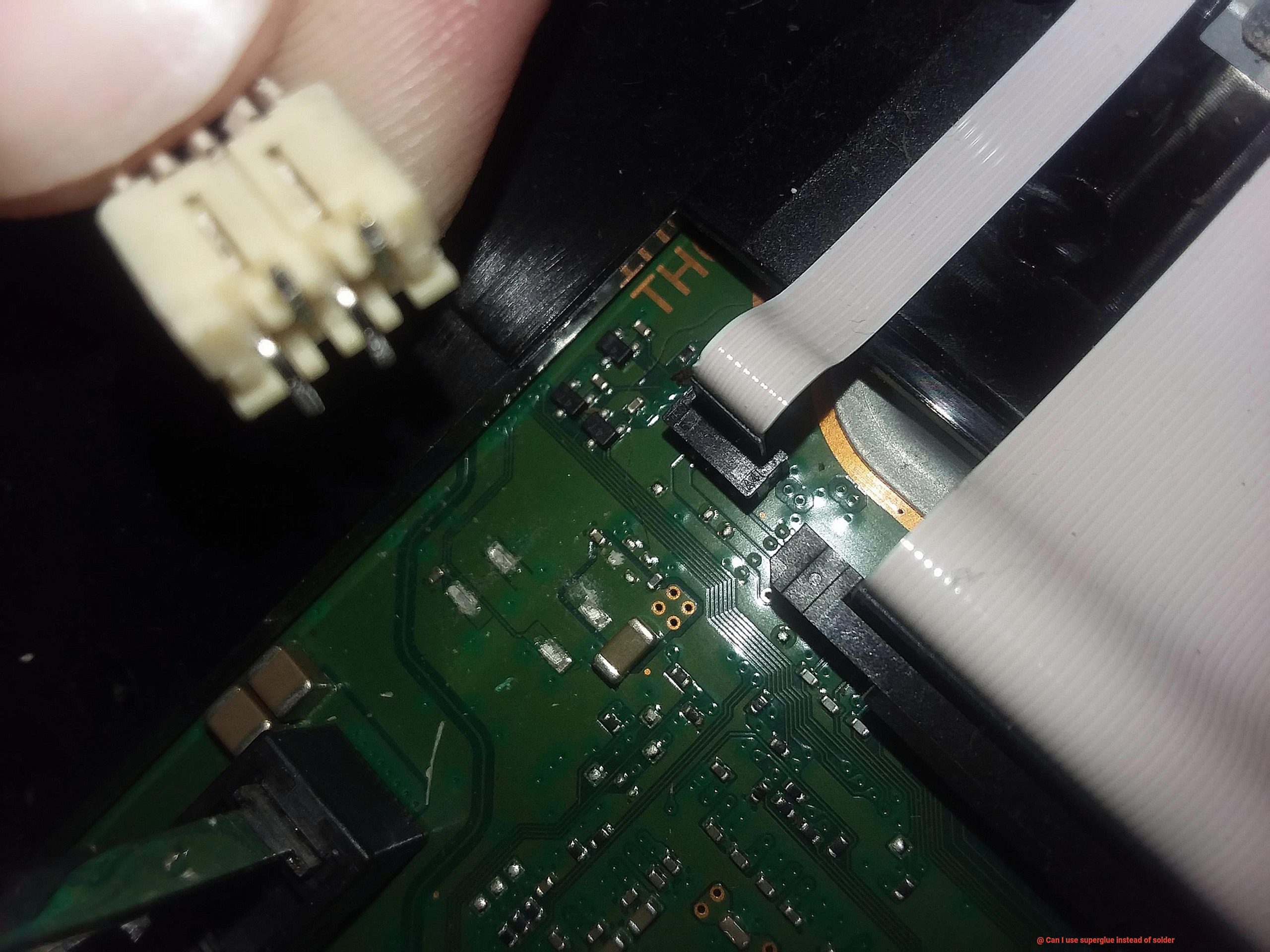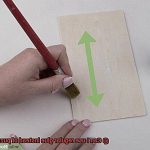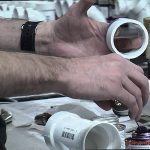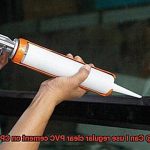Surfboard owners, brace yourselves. We all know the frustration of facing those inevitable battle scars on our beloved boards. Dings, cracks, and wobbly fins can be a total buzzkill when you’re ready to ride those gnarly waves.
But what if we told you there might be a secret weapon lurking in your toolbox? Enter superglue, the unsung hero that could potentially save your surfboard from disaster.
In this blog post, we’ll dive into the world of superglue repairs for surfboards, exploring the upsides and downsides while giving you the lowdown on safety precautions. So grab your board and let’s ride this wave of knowledge.
Pros and Cons of Using Superglue on a Surfboard
Contents
- 1 Pros and Cons of Using Superglue on a Surfboard
- 2 Factors to Consider Before Using Superglue
- 3 How to Use Superglue Effectively on a Surfboard
- 4 Types of Foam Used in Surfboards and Their Compatibility with Superglue
- 5 Warranty Implications of Using Superglue on a Surfboard
- 6 Professional Repair vs DIY Repairs with Superglue
- 7 Safety Tips for Using Superglue on a Surfboard
- 8 Common Mistakes When Using Superglue on a Surfboard
- 9 Conclusion
Surfboards are subjected to constant waves and accidental collisions, making them prone to damage. Many surfers turn to superglue as a quick and convenient solution for minor dings and cracks. In this article, we will explore the pros and cons of using superglue on surfboards, shedding light on its effectiveness and potential drawbacks.
Pros:
- Quick and Easy Repair: Superglue’s rapid drying time allows for instant fixes on small damages, enabling surfers to get back in the water sooner. Its convenience is especially valuable when you’re eager to catch the next wave.
- Strong Bond: Superglue forms a robust adhesive bond that can withstand the pressures and forces experienced during surfing. It ensures your board remains structurally sound, preventing further damage or compromising performance.
- Cost-Effective Solution: Compared to professional repairs or purchasing a new surfboard, using superglue is a budget-friendly option for minor repairs. This makes it an ideal choice for surfers looking to save money while keeping their boards in good shape.
- Versatile Application: Superglue can be used on different surfboard materials, such as epoxy, polyurethane, or fiberglass, making it a versatile choice for various board types. Additionally, it can be used to attach fins or repair leash plugs, expanding its usefulness beyond just fixing dings.
Cons:
- Aesthetic Concerns: While superglue offers functional repairs, it may not always provide the best cosmetic result. Visible lines where repairs were made can be unsightly for surfers who prefer their boards to look pristine.
- Limited Durability: Although superglue is strong, it may not provide a long-lasting repair for significant damage or areas under high stress during surfing. Over time, the repaired area may weaken or break again, requiring further repairs or potentially compromising the board’s performance.
- Potential Toxicity: It is important to note that some superglues contain chemicals that can be harmful if inhaled or come into contact with the skin. Surfers should handle the glue with caution and follow safety guidelines to protect their health while using it on their surfboards.
- Lack of Professional Expertise: Superglue is a temporary solution for minor repairs but cannot replace the expertise of a professional surfboard repair technician. For extensive damage or complex repairs, seeking professional assistance ensures optimal performance and longevity.
Factors to Consider Before Using Superglue
Before reaching for that trusty tube of superglue, let’s dive into some essential factors to consider. While superglue can be a convenient solution, it’s crucial to weigh the pros and cons to ensure you don’t cause more harm than good.
Compatibility with Materials:
Consider the materials your surfboard is made of. Most surfboards are constructed from foam or fiberglass, requiring specific adhesives for optimal bonding. Superglue may not be compatible with these materials, potentially damaging or weakening your board.
Flexibility Matters:
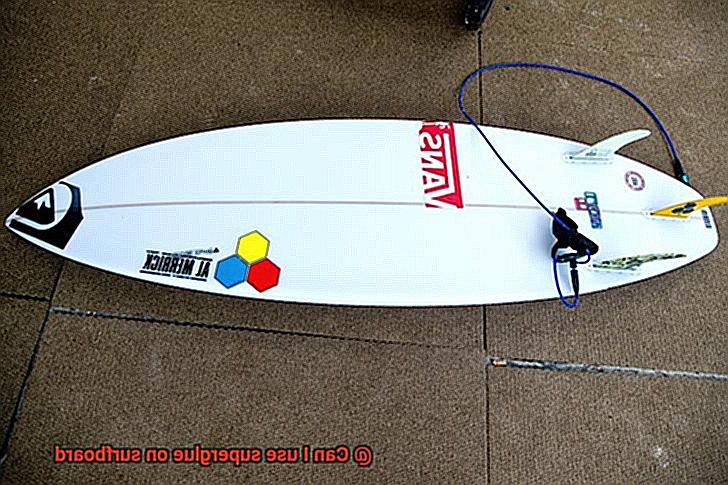
Surfboards endure constant forces from waves, impacts, and bending. The glue you choose should withstand these stresses without becoming brittle or cracking. Unfortunately, superglue lacks flexibility, making it less suitable for applications requiring movement or flexing.
Water Resistance:
Surfboards spend significant time in water, so choose an adhesive with excellent water resistance properties. Superglue may provide initial adhesion, but it’s not formulated to withstand prolonged exposure to water. Over time, this can lead to delamination or separation of glued parts.
Safety First:
Superglue contains chemicals that can be harmful if not used properly. Follow safety precautions like wearing gloves and working in a well-ventilated area when using any adhesive. Test a small area before applying extensively, as some individuals may have allergic reactions to certain components.
Professional Expertise:
Instead of a quick fix with superglue, consult a professional surfboard repair technician. They have the knowledge, experience, and equipment necessary for proper repairs that won’t compromise your board’s integrity and performance. Using superglue as a temporary solution may lead to more extensive damage in the long run.
How to Use Superglue Effectively on a Surfboard
We all know how much we love our boards and how heartbreaking it can be when they get damaged. But fear not. In this guide, we’ll show you how to use superglue effectively to repair those small cracks and dings in your surfboard’s fiberglass or epoxy coating. It’s time to get your board back in the water and catch some gnarly waves.
Clean It Up:
Before applying any glue, you need to make sure the damaged area is squeaky clean. Grab a mild soap or surfboard cleaner and give it a good scrub. Get rid of all that dirt, wax, and oils that might be hanging around. This step is crucial because any debris left on the surface can prevent the superglue from adhering properly.
Smooth It Out:
Now that it’s clean, grab some fine-grit sandpaper and gently sand the damaged area. This will create a rough surface for the superglue to stick to. Make sure to only sand the immediate area around the crack or ding to avoid damaging the surrounding fiberglass or epoxy coating.
Apply the Magic:
Drip just a tiny amount of superglue onto the crack or ding. Remember, a little goes a long way. Don’t go crazy or you’ll end up with a sticky mess. The goal here is to fill the crack or ding with just enough glue to create a strong bond.
Spread It Like Butter:
Grab a plastic spreader or even use your finger (with adult supervision, of course) to evenly distribute the glue over the damaged area. Move fast because superglue dries faster than you can say “cowabunga.” Spread the glue beyond the edges of the crack or ding to ensure complete coverage.
Hold It Tight:
Press the damaged area together firmly for a few minutes until the glue sets. If needed, use clamps or place something heavy on top to apply pressure. This will help ensure a strong bond. Be careful not to squeeze too hard and push out excess glue.
Smooth It Down:
Once the glue has set, grab that fine-grit sandpaper again and gently sand down any excess glue. Be gentle, my friends, we don’t want to damage the surrounding fiberglass or epoxy coating. The goal is to create a smooth surface that blends seamlessly with the rest of the board.
Types of Foam Used in Surfboards and Their Compatibility with Superglue
Surfboards are more than just a means to ride the waves; they are a surfer’s trusted companion. To construct these aquatic marvels, different types of foam are used. In this essay, we will embark on a journey through the fascinating realm of surfboard foam and explore its compatibility with superglue.
Polyurethane (PU) Foam – The Classic Choice:
Polyurethane foam, the traditional pick for surfboard blanks, is renowned for its lightweight, durable, and flexible nature. It allows surfers to carve through waves with grace and ease. However, when it comes to superglue, PU foam becomes as fragile as sand slipping through your fingertips. The chemicals in superglue can gradually degrade the foam, leading to its disintegration over time.
Expanded Polystyrene (EPS) Foam – Lightness Meets Buoyancy:
EPS foam, an increasingly popular option for surfboards, boasts remarkable lightness and exceptional buoyancy. It is an ideal choice for those seeking high-performance rides. Although EPS foam fares better than PU foam when it comes to compatibility with superglue, caution is still warranted. The use of superglue on EPS foam can cause damage to the foam, leaving you with a sinking feeling rather than gliding gracefully on waves.
Extruded Polystyrene (XPS) Foam – The Water-Resistant Warrior:

Extruded polystyrene foam, commonly known as XPS or styrofoam, is not typically utilized in surfboard construction due to its limited flexibility and impact resistance. However, XPS foam excels in water resistance. While it may be more resistant to the effects of superglue compared to PU and EPS foams, it is advisable to steer clear of using superglue on this foam altogether. Attempting to bond XPS foam with superglue would be like attempting to catch a wave without a board.
Stick to Surfboard-Specific Adhesives:
To ensure the longevity and performance of your surfboard, it is crucial to utilize adhesives specifically designed for surfboard repairs. Epoxy resin or polyester resin are excellent options for bonding surfboard materials together, providing a strong and lasting bond without compromising the integrity of the foam.
Seek Expert Advice:
When it comes to repairing your beloved surfboard, seeking the guidance of a professional surfboard repair specialist is always wise. These experts possess the knowledge and experience necessary to guide you in selecting the right adhesive for your specific foam type, guaranteeing optimal repair results.
Warranty Implications of Using Superglue on a Surfboard
Imagine the exhilaration of riding a wave, the ocean surging beneath your feet. But what happens when your beloved surfboard gets damaged? The temptation to use superglue for a quick fix may be strong, but have you considered the warranty implications? In this article, we will explore in detail the consequences of using superglue on your surfboard. So grab your wetsuit and get ready to dive into the world of warranties.
Understanding the warranty:
Surfboard manufacturers offer warranties to assure surfers that their investment is protected against defects in materials or workmanship for a specific period. It’s important to note that these warranties come with terms and conditions.
The superglue effect:
While using superglue may seem like a convenient solution, it’s crucial to consider its impact on your board’s warranty. Manufacturers argue that using unauthorized adhesives can compromise the board’s integrity, potentially leading to further damage or failure. In other words, your warranty may be at risk if you choose to use superglue.
Reading between the lines:
Before attempting any repairs, carefully read and understand the terms and conditions of your surfboard’s warranty. Some warranties explicitly state that using unauthorized adhesives or making modifications will void the warranty. By familiarizing yourself with these guidelines, you can make informed decisions about how best to address any damages.
Manufacturer recommendations:
Surfboard manufacturers often provide specific recommendations for repair adhesives compatible with their boards. These recommendations are based on extensive testing and ensure that the repaired board maintains its structural integrity. By following these guidelines, you not only preserve your warranty but also increase the likelihood of a successful repair.
Proceed with caution:
If you still choose to use superglue despite the warranty implications, proceed with caution. Properly apply the glue and avoid contact with areas that could affect the board’s performance or durability. However, it’s important to note that using superglue may not provide a reliable or long-lasting repair solution. The adhesive may not bond well with the materials used in surfboard construction, potentially leading to failure in the future.
Professional Repair vs DIY Repairs with Superglue
First up, professional repair. These experts are masters of their craft, having encountered every type of damage imaginable – from minor dings to major structural issues. They possess the skills and experience to accurately assess the damage and employ the necessary repair techniques.
With access to specialized tools, materials, and adhesives designed specifically for surfboard repairs, they can restore your board to its original strength and performance. This means you can hit those gnarly waves again with unwavering confidence.
But that’s not all – trained technicians can also identify any underlying problems or potential issues and address them during the repair process. Talk about peace of mind.
Now, let’s talk about the DIY route with everyone’s favorite adhesive – superglue. For minor dings and cracks that don’t require professional intervention, superglue can be a quick fix. It’s affordable, readily available, and easy to use.
Just a dab here and there, and voila. Your board is good to go…at least temporarily. However, there are some downsides to consider. Superglue isn’t specifically designed for surfboard repairs, so its bonding strength may not be sufficient for larger or more severe damage.
This means your fix may not be as durable or reliable as you’d like, leaving you vulnerable to further issues down the line.
Safety Tips for Using Superglue on a Surfboard
Surfing is a thrilling sport that brings us closer to the power of the ocean. However, even the most experienced surfers can’t avoid the occasional ding or crack in their beloved surfboards.
While superglue can be a quick fix for minor damages, it’s crucial to prioritize safety when using this adhesive on your surfboard. In this article, we will explore essential safety precautions to ensure a successful and safe repair process.
Ventilation: Breathe Easy
When working with superglue, ensure you are in a well-ventilated area. The fumes released by the glue can be harmful if inhaled for an extended period. Open windows or use fans to improve air circulation and keep those fumes at bay. Let the fresh ocean breeze accompany you during the repair process.
Protective Gear: Shield Yourself
Before diving into the repair process, gear up. Wearing gloves will protect your hands from glue sticking to your fingers and any potential skin irritation. Safety glasses or goggles will shield your eyes from accidental splashes and ensure you can still enjoy clear views of the waves.
Skin Protection: Be Prepared
Accidental contact with superglue can be a sticky situation. Keep acetone or nail polish remover nearby to dissolve the adhesive and make it easier to remove from your skin without causing damage. Remember, be gentle when removing the glue to avoid skin irritation or discomfort, just like riding the waves with grace.
Avoid Contact with Clothing: Dress Smart
Superglue is notorious for its strong bonding capability, and it won’t hesitate to latch onto your clothing if given the chance. To prevent any mishaps, wear old or protective clothing that you don’t mind staining or damaging. Also, cover your work area with a protective sheet or newspapers to catch any potential spills, just like laying down a towel before sunbathing on the beach.
Careful Application: Precision Matters
When applying superglue, take your time and be precise. Apply the glue sparingly to avoid excess drips or spills that could mar the surface of your board. Opt for a small brush or toothpick for accurate application, minimizing the chances of getting glue where it’s not intended. Treat your surfboard repair like a delicate dance, ensuring each step is executed flawlessly.
Common Mistakes When Using Superglue on a Surfboard
Surfers know the importance of keeping their surfboards in top shape, and superglue can be a quick fix for minor repairs. However, there are common mistakes that can jeopardize the effectiveness of the repair. Let’s explore these mistakes and how to avoid them.
Applying Too Much Glue:
Less is more when it comes to using superglue on a surfboard. Applying too much adhesive can result in excess glue seeping out and creating a messy repair job. To ensure a strong bond without the mess, apply a thin, even layer of glue.
Improper Surface Preparation:
For a successful repair, proper surface preparation is crucial. Clean the affected area thoroughly and ensure it is dry before applying superglue. A dirty or moist surface can compromise the adhesive’s ability to bond effectively, leading to a weaker repair.
Using Superglue on Flexing or Stressed Areas:
Superglue is not designed to withstand constant flexing or stress, making it unsuitable for repairing areas that experience a lot of movement, such as the nose or tail of a surfboard. Opt for specialized epoxy resin or repair kits that offer more flexibility and durability.
Rushing the Drying Process:
To achieve a strong bond, give superglue sufficient time to cure and set properly. Avoid applying excessive heat or using force prematurely to speed up the drying process. Patience is key for a successful repair that will withstand the test of time.
Ignoring Manufacturer’s Instructions:
Each brand of superglue may have specific instructions and recommendations for their product. Neglecting these guidelines can lead to subpar repairs or even damage to your surfboard. Take the time to read and follow the manufacturer’s instructions for optimal results.
hSk3DpMy4Ys” >
Conclusion
Yes, you can use superglue on a surfboard.
However, it is important to proceed with caution and understand the potential risks involved. Superglue can be effective in repairing minor dings and cracks on your surfboard.
Its strong adhesive properties can help bond the damaged areas back together. But remember, using superglue is not a permanent solution and should only be used as a temporary fix until you can properly repair your surfboard.
Additionally, make sure to choose a superglue that is water-resistant or waterproof to ensure it holds up in the ocean.

